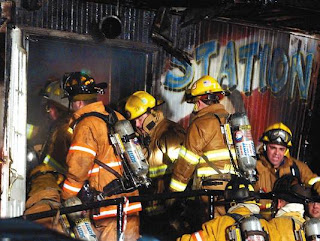 |
| Public Safety Stores (Photo: AP) |
We have seen these before - nightclub fires that cause hundreds of people to die.
- there was the Cocoanut Grove Fire in 1942 that killed 492 people in Boston
- there was the Station Nightclub Fire in 2003 that killed 100 people in Rhode Island
- now we have the Kiss Nightclub Fire this year that killed 253 people in Brazil
So why do these type of fires keep occurring?
In this video the NFPA Manager for Building and Life Safety Codes discusses this.
He comments on the danger of revolving door exits, and the use of combustible decorations.
But as he says, Building and Safety Codes are constantly being created. Then it becomes a matter of enforcing these Codes. As well as the obligation of building owners to comply with Codes.
Once a fire starts and emergency responders are called to a scene, they work hard to save as many lives as possible. But there is only so much Firefighters, EMTs and Police can do to make a bad situation better.
Visit the Public Safety Stores Facebook page to share your thoughts and feedback!



